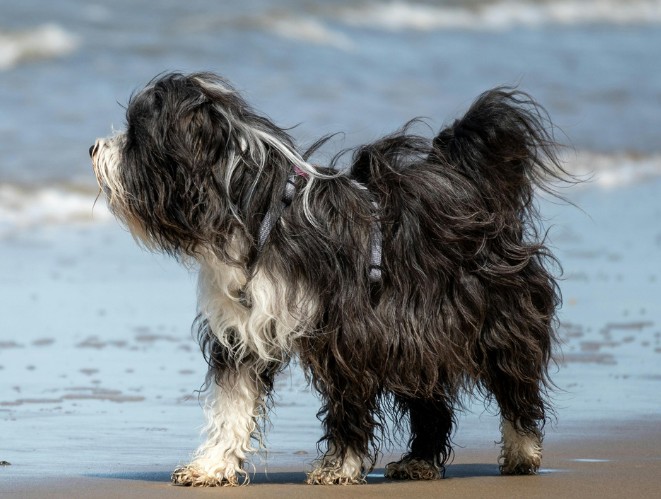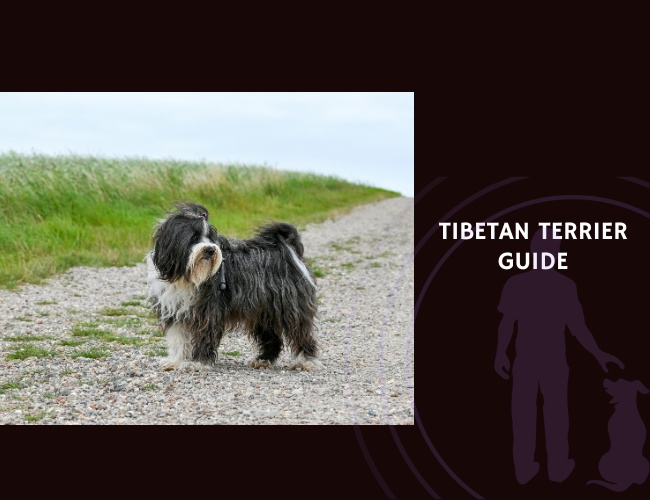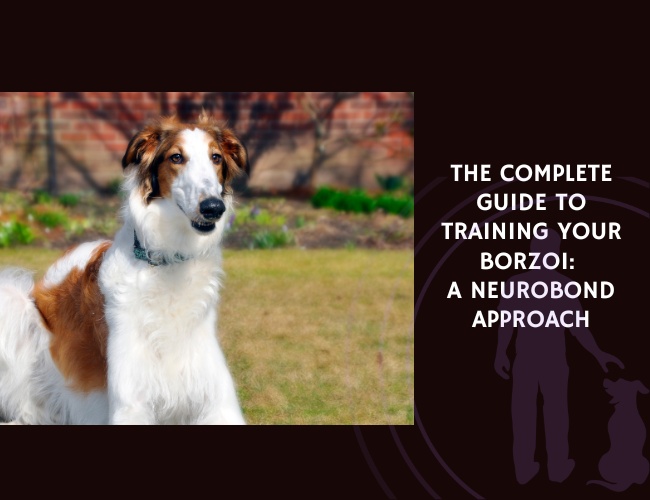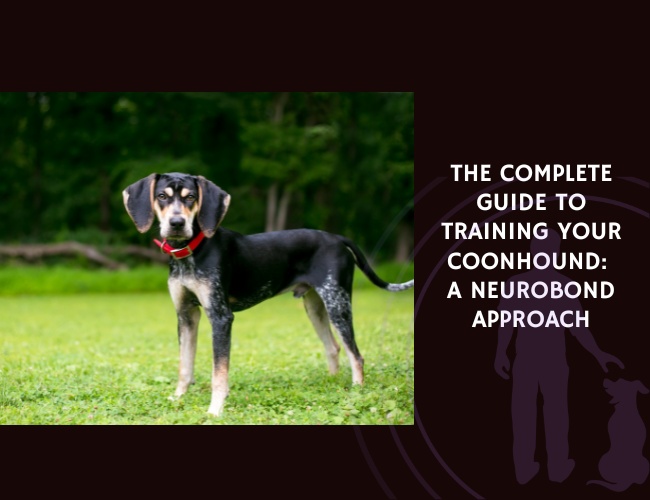Introduction: Meeting the “Holy Dog of Tibet”
Imagine a dog so treasured that for over 2,000 years, they were considered sacred beings, never sold but only gifted as bearers of good fortune. The Tibetan Terrier, despite what their name might suggest, isn’t actually a terrier at all—this ancient breed earned their misleading moniker from European travelers who encountered these remarkable dogs in the 1920s and named them based purely on size. What you’re really meeting when you welcome a Tibetan Terrier into your life is a piece of living history, a companion breed that once patrolled the monasteries of Tibet and herded livestock across the world’s most challenging terrain.
Your Tibetan Terrier carries within them the wisdom of the Himalayas, where they developed their signature “snowshoe” feet and that magnificent double coat that flows like silk. These medium-sized companions (standing 14-17 inches and weighing 18-30 pounds) bring an extraordinary blend of independence and devotion that reflects their dual heritage as both monastery companions and working dogs. Did you know that these dogs were so valued in their homeland that they were treated like children within families, sharing meals and sleeping spaces with the monks who raised them?
Today’s Tibetan Terrier maintains that same deeply spiritual connection to their human families, offering you not just a pet, but a sensitive, intelligent partner who will read your moods, guard your home with their distinctive bark, and perhaps most remarkably, share your life for an impressively long time—often reaching 15-18 years with proper care. Let us guide you through understanding this extraordinary breed that bridges ancient wisdom with modern companionship.
Character & Behaviour: Understanding Your Tibetan Terrier’s Ancient Soul
The Heritage That Shapes Their Heart
When you observe your Tibetan Terrier’s behavior, you’re witnessing traits refined over millennia in the “Lost Valley” of Tibet, a region that became isolated after a devastating 14th-century earthquake destroyed its only access road. This isolation created a breed with remarkable consistency in temperament—your furry friend descends from dogs who were simultaneously cherished family members, vigilant watchdogs, and capable herding assistants. You might notice how your Tibetan Terrier naturally positions themselves to watch over the family, a behavior encoded in their DNA from centuries of monastery guardianship.
The working heritage manifests in three primary ways:
- Your dog’s loud, persistent bark that seems disproportionate to their size (this protected monasteries from intruders)
- Their uncanny ability to remember routes and locations (essential for navigating treacherous mountain paths)
- An independent streak that can make them seem almost cat-like in their decision-making
This breed’s emotional intelligence runs deeper than most realize. Tibetan Terriers possess what researchers might describe as heightened amygdala sensitivity—they’re acutely attuned to emotional atmospheres in your home. When you’re stressed, your Tibetan Terrier knows it before you’ve said a word, often responding with gentle proximity-seeking behaviors or playful distractions designed to lift your spirits.
The Sensitivity That Defines Them
Your Tibetan Terrier’s emotional radar is both a blessing and a responsibility. These dogs don’t just live alongside you; they synchronize with your emotional rhythms in ways that can feel almost telepathic. This sensitivity means harsh words or aggressive training methods don’t just fail—they can damage the trust bond that makes this breed so special. You’ll find that a disappointed sigh affects them more profoundly than any physical correction ever could.
Reading your Tibetan Terrier’s emotional states:
- A relaxed tail wag that starts from the whole backend tells you they’re genuinely happy
- Sudden stillness with alert ears means they’re processing something concerning
- The “Tibetan lean” against your legs signals their need for reassurance
Their social nature extends beyond just their immediate family. While Tibetan Terriers maintain a healthy reserve around strangers (never aggressive, but decidedly aloof), they form intricate social hierarchies with other household pets. You might observe them orchestrating elaborate greeting rituals or establishing specific play patterns with each family member—no two relationships are quite the same.
Intelligence Meets Independence
Here’s where your Tibetan Terrier might surprise you: they’re brilliant problem-solvers who often choose not to solve problems the way you’d prefer. This isn’t stubbornness in the traditional sense—it’s more like dealing with a creative consultant who always has alternative suggestions. Your Tibetan Terrier processes commands through a filter of “Does this make sense in this context?” rather than blind obedience.
This cognitive style means you’ll witness moments of stunning intelligence—perhaps your dog figuring out how to open a particularly challenging door latch or creating their own games with household objects. Yet the same dog might look at you blankly during the fifteenth repetition of “sit” in a training session, not because they don’t understand, but because they find the repetition mind-numbingly pointless. They’re asking themselves, “Didn’t we already establish that I know how to sit?”
Training & Education: Nurturing Your Tibetan Terrier’s Potential
The Critical Windows of Development
Between three weeks and five months of age, your Tibetan Terrier puppy’s brain undergoes rapid neuroplasticity—this is when neural pathways form that will influence their behavior for life. Missing this window doesn’t mean you can’t train an older dog, but it does mean working harder to overcome ingrained response patterns. During this period, every positive interaction with a child, every gentle introduction to a new sound, and every successful meeting with another dog literally shapes your puppy’s neural architecture.
Your socialization checklist for success:
- Week 3-7: Gentle handling by various family members (different ages, genders)
- Week 7-10: Introduction to household sounds (vacuum, doorbell, television)
- Week 10-14: Controlled meetings with vaccinated, calm adult dogs
- Week 14-20: Expanded experiences (car rides, different surfaces, weather conditions)
The Tibetan Terrier’s sensitive nature means socialization must be carefully calibrated. You’re not trying to overwhelm them with experiences but rather building positive associations gradually. Think of it like teaching someone to swim—you don’t throw them in the deep end; you let them wade in at their own pace while ensuring they feel secure.
The Art of Training Without Repetition
Remember how we mentioned your Tibetan Terrier finds repetition soul-crushing? This isn’t hyperbole—these dogs genuinely suffer when forced through drilling exercises. Instead, you’ll find success with what trainers call “conceptual learning.” Rather than practicing “sit” twenty times, you teach the concept of stillness in various contexts—sitting before meals, sitting to greet guests, sitting before crossing streets. Each application feels fresh to your dog while reinforcing the core behavior.
Structuring effective training sessions:
- Keep sessions to 5-10 minutes maximum
- Introduce variations within each session (different locations, positions, rewards)
- End on a successful note, even if it means simplifying the task
- Use high-value rewards that change (cheese one day, freeze-dried liver the next)
Your Tibetan Terrier responds beautifully to what behaviorists call “choice-based training.” Instead of commanding “come,” you might create situations where coming to you is the obvious best choice—perhaps you’re sitting with their favorite toy or near their dinner bowl. This approach respects their independent nature while achieving your training goals.

Developing Specialized Skills
Did you know your Tibetan Terrier carries dormant herding instincts that can be awakened through proper training? Many owners discover their dogs naturally attempt to “herd” family members, gently nudging children away from stairs or corralling everyone into one room. This isn’t random behavior—it’s their ancestral programming surfacing in a modern context.
Channeling their working heritage:
- Agility training satisfies their need for purposeful movement
- Therapy dog work utilizes their emotional sensitivity
- Trick training engages their problem-solving abilities
- Scent work taps into their keen sensory awareness
The key to unlocking your Tibetan Terrier’s potential lies in making training feel like collaboration rather than instruction. When teaching agility, for instance, let them explore the equipment at their own pace initially. You might be surprised to find them creating their own “course” that makes more sense to them than the standard sequence.
The Challenge of Recall
Here’s an honest truth about Tibetan Terriers: their recall can be remarkably unreliable, despite their otherwise trainable nature. The American Tibetan Terrier Club explicitly recommends never allowing them off-leash in unsecured areas. This isn’t a training failure—it’s acknowledgment of a breed characteristic that stems from their independent decision-making heritage.
Your approach to recall training needs to account for this reality. Instead of expecting 100% reliability, you’re building a strong enough relationship that your dog usually chooses to return. Practice recall in increasingly distracting environments, but always with a backup plan (long training lead, secured area). Think of it like teaching a teenager to drive—you trust them, but you still keep your hand near the emergency brake.
Nutritional Recommendations: Fueling Your Long-Lived Companion
Understanding Metabolic Needs
Your Tibetan Terrier’s nutritional requirements reflect their unique combination of moderate activity levels and impressive longevity. These dogs often live 15-18 years, which means the dietary choices you make today will impact their health well into their senior years. Their metabolism tends toward efficiency—they don’t require as many calories as similarly sized breeds with higher energy outputs, but they do need nutrient density to support their magnificent coat and maintain joint health.
Daily caloric needs by life stage:
- Puppies (2-6 months): 55-60 calories per pound of body weight
- Adolescents (6-12 months): 45-50 calories per pound
- Adults (1-7 years): 30-35 calories per pound
- Seniors (7+ years): 25-30 calories per pound, adjusted for activity
The “raw food advantage” isn’t just trendy marketing—for Tibetan Terriers, a diet mimicking their ancestral eating patterns can address multiple breed-specific concerns simultaneously. Raw diets with 70% moisture content support urinary health, while the natural enzymes aid digestion in dogs prone to sensitive stomachs. However, if raw feeding isn’t feasible for your lifestyle, high-quality commercial foods meeting AAFCO standards can absolutely support your dog’s health when chosen carefully.
Supporting Joint Health Through Nutrition
Given the breed’s susceptibility to hip dysplasia and patellar luxation, your nutritional strategy should prioritize joint support from puppyhood. This isn’t just about adding supplements—it’s about creating an anti-inflammatory nutritional environment that protects cartilage and maintains synovial fluid production throughout your dog’s exceptionally long life.
Your joint-support nutrition protocol:
- Omega-3 fatty acids (EPA/DHA): 20-30mg per pound of body weight daily
- Glucosamine HCL: 500mg per 25 pounds of body weight
- Chondroitin sulfate: 400mg per 25 pounds of body weight
- Green-lipped mussel extract: 77mg per kilogram of body weight
You might notice your Tibetan Terrier naturally gravitates toward certain foods when experiencing minor joint discomfort—this instinctive self-medication is worth observing. Many owners report their dogs showing increased interest in fish-based proteins during weather changes that affect arthritic joints.
The Coat-Nutrition Connection
That flowing double coat isn’t just beautiful—it’s a reflection of your Tibetan Terrier’s internal health. Nutritional deficiencies show up first in coat quality, often weeks before other symptoms appear. When you run your fingers through your dog’s coat, you’re essentially performing a health check. A healthy coat should feel silky, not greasy or brittle, with the undercoat maintaining its wool-like texture without matting excessively.
Nutrients essential for coat health:
- High-quality protein (minimum 25% dry matter basis for adults)
- Omega-6 fatty acids in 5:1 ratio with omega-3s
- Zinc (120mg per kilogram of dry food)
- Biotin (especially important during coat changes)
- Vitamin E (50 IU per kilogram of body weight)
During the dramatic “puppy blow” around one year of age, your Tibetan Terrier’s nutritional needs intensify. This coat transformation requires additional protein and fatty acids—consider increasing their food by 10-15% during this period while monitoring body condition to prevent unwanted weight gain.
Ancient. Sensitive. Independent.
Heritage shapes their instincts in ways that feel both timeless and immediate. Every watchful glance, every precise movement carries echoes of a life spent guarding monasteries and navigating the steep passes of Tibet. These instincts remain sharp, giving the Tibetan Terrier an unwavering sense of purpose in their role within the family.
Emotional connection drives their loyalty, binding them to the subtle rhythms of your daily life. They read your body language and tone with an accuracy that can be disarming, responding in kind with comfort, vigilance, or playfulness. This heightened awareness creates a partnership built on trust rather than control.



Intelligence fuels their independence, making them both delightful and challenging to guide. Commands are weighed against context, and solutions are often uniquely their own. Working with a Tibetan Terrier means embracing a dialogue—one where mutual respect allows their creativity to become an asset, not an obstacle.
Health Concerns: Protecting Your Tibetan Terrier’s Wellbeing
Understanding Genetic Predispositions
Your Tibetan Terrier comes from two primary Western lineages—Lamleh and Luneville—descended from a small number of dogs brought to Europe in the 1920s. This limited genetic foundation means certain health conditions appear more frequently in the breed than in the general dog population. Knowledge of these predispositions empowers you to implement preventive strategies and recognize early warning signs.
Progressive Retinal Atrophy (PRA) represents one of the most significant genetic concerns. You might first notice your dog hesitating at the top of stairs in dim light or bumping into furniture when entering a dark room. This isn’t clumsiness—it’s the beginning of night blindness that can manifest anywhere from eight months to five years of age. While there’s no cure, early detection allows you to modify your home environment and training to support a vision-impaired dog who can still live a full, happy life.
Neuronal Ceroid Lipofuscinosis (NCL) presents a more complex challenge, typically appearing between ages 5-7. The first signs might seem like normal aging—difficulty seeing at twilight, occasional disorientation. But as this storage disease progresses, you’ll observe personality changes that can be heartbreaking: your gentle companion might become unexpectedly aggressive, lose house training, or develop anxiety. Understanding NCL’s progression helps you provide compassionate care while making difficult quality-of-life decisions when necessary.
Orthopedic Vigilance
The same snowshoe-like feet that helped your Tibetan Terrier’s ancestors navigate Himalayan terrain can be vulnerable to modern orthopedic issues. Hip dysplasia and patellar luxation don’t always announce themselves dramatically—sometimes the only sign is a subtle change in how your dog rises from rest or a barely perceptible “skip” in their gait.
Early warning signs to monitor:
- Reluctance to jump onto previously accessible furniture
- “Bunny hopping” when running (both back legs moving together)
- Sitting with one leg extended to the side
- Excessive licking of hip or knee areas
- Stiffness that doesn’t improve with warming up
Your veterinary partnership becomes crucial here. Annual orthopedic evaluations starting at age two can catch problems before they become debilitating. Many Tibetan Terriers with mild hip dysplasia or Grade 1-2 patellar luxation live completely normal lives with appropriate management including weight control, targeted exercise, and joint supplements.
The Longevity Advantage
Here’s something remarkable: despite these health concerns, Tibetan Terriers consistently rank among the longest-lived breeds. UK studies show an average lifespan of 13.8 years, with many individuals reaching 18 or beyond. This longevity isn’t accidental—it reflects the breed’s robust constitution developed over millennia in harsh mountain conditions. Your role is to support this natural hardiness through preventive care and early intervention when issues arise.
Lifestyle & Environment: Creating Your Tibetan Terrier’s Perfect World
Exercise: Quality Over Quantity
Your Tibetan Terrier needs about an hour of daily exercise, but how you structure that hour matters more than hitting an exact number. These dogs thrive on varied, engaging activities rather than monotonous walks around the same block. Think of exercise as mental stimulation delivered through physical activity—a philosophy that respects both their moderate energy levels and their intelligent, easily bored nature.
Structuring the perfect exercise routine:
- Morning: 20-minute exploration walk with sniffing opportunities
- Midday: 15-minute training or puzzle-solving session
- Evening: 25-minute active play or social time with other dogs
You’ll notice your Tibetan Terrier has distinct exercise preferences that often reflect the weather. These dogs absolutely adore snow—their double coat and snowshoe feet suddenly make perfect sense as they bound through drifts with pure joy. Summer exercise requires more careful planning, as their coat can cause overheating during intense activity. Early morning or evening sessions work best during warm months.
The Home Environment
Your Tibetan Terrier doesn’t need a mansion, but they do need strategic spaces within your home. These natural watchdogs require viewing posts—a chair by the window, a landing on the stairs—where they can monitor their territory. Denying them these observation points can actually increase anxiety and excessive barking as they struggle to fulfill their guardian instincts.
Creating optimal living spaces:
- Establish multiple “stations” where your dog can observe household activity
- Provide a quiet retreat space for when stimulation becomes overwhelming
- Ensure flooring offers good traction (important for dogs prone to patellar luxation)
- Maintain consistent temperature zones (they’ll seek cool floors in summer, warm spots in winter)
The breed’s adaptability means they can thrive in apartments or country estates, but there’s a catch: Tibetan Terriers cannot tolerate isolation. If you work long hours away from home, this isn’t your breed unless you can arrange midday visits or doggy daycare. The separation anxiety isn’t just inconvenient—it can manifest as destructive behavior, excessive barking, or even self-harm through obsessive licking.
Social Architecture
Your Tibetan Terrier views your family as their monastery—a sacred space populated by individuals requiring different levels of protection and interaction. They’ll develop unique relationships with each family member: perhaps being playful with teenagers, gently protective of toddlers, and deeply bonded to one primary caregiver. This social complexity reflects their heritage as community dogs who lived intimately with multiple monks.
With other pets, Tibetan Terriers generally coexist peacefully when properly introduced, though they may display resource guarding around food or favored toys. You might observe them creating elaborate social rituals—specific greeting sequences, play invitations, or boundary-setting behaviors that maintain household harmony. Understanding these dynamics helps you support positive relationships rather than inadvertently creating competition or conflict.

The Grooming Lifestyle
Let’s be honest: grooming a Tibetan Terrier isn’t just maintenance—it’s a lifestyle commitment that will consume significant portions of your week. That beautiful flowing coat demands attention, especially during the notorious “puppy blow” around one year old when the adult coat emerges. During this 6-8 week period, you might spend an hour daily preventing mats as dead puppy coat tangles with emerging adult hair.
Your grooming reality check:
- Puppy coat (0-10 months): 15 minutes every other day
- The “blow” (10-14 months): 30-60 minutes daily
- Adult coat maintenance: 20-30 minutes 3-4 times weekly
- Professional grooming: Every 6-8 weeks minimum
Many owners discover grooming becomes meditation—a bonding ritual where your dog learns to trust your gentle handling while you monitor their health through coat condition. The key is starting early, making grooming pleasant with treats and praise, and never allowing mats to develop to the painful point where aggressive brushing becomes necessary.
Senior Care: Honoring Your Aging Companion
The Graceful Aging Process
Your Tibetan Terrier’s senior years often arrive so gradually you might not notice the transition. These dogs age remarkably well, maintaining playfulness and alertness well into their teens. However, by age seven, cellular aging begins affecting everything from metabolism to cognitive function, even if outward signs remain minimal. Proactive senior care can extend not just lifespan but quality of life during these golden years.
Age-related changes to monitor:
- Slight cloudiness in eyes (normal nuclear sclerosis vs. concerning cataracts)
- Longer recovery time after exercise
- Increased sleep, especially during daytime
- Selective hearing (or actual hearing loss)
- Subtle personality changes (increased clinginess or independence)
Your senior Tibetan Terrier benefits from twice-yearly veterinary examinations rather than annual visits. Blood work can detect kidney or liver changes before clinical symptoms appear, while regular weight checks catch gradual loss or gain that might indicate underlying issues. Remember, these dogs are stoic—they won’t complain until problems become severe.
Cognitive Support
Cognitive Dysfunction Syndrome (similar to human dementia) can affect Tibetan Terriers in their final years. You might notice your once-clever companion getting “stuck” in corners, forgetting familiar routes, or experiencing sleep-wake cycle disruptions. While cognitive decline can’t be reversed, enrichment activities and dietary supplements can slow progression significantly.
Supporting mental acuity includes puzzle feeders even for senior dogs (adjusted for any dental issues), teaching new but simple tricks to maintain neural plasticity, maintaining social interactions with familiar dogs and people, and creating consistent routines that reduce anxiety while providing gentle challenges. Your senior dog’s world might be shrinking, but it doesn’t have to become empty.
Comfort Modifications
As your Tibetan Terrier ages, small environmental modifications can dramatically improve their quality of life. These aren’t admissions of decline—they’re acknowledgments of your dog’s lifetime of companionship deserving comfort in their final years. Consider orthopedic bedding that supports arthritic joints, ramps or steps to previously jumped-upon furniture, non-slip rugs on slippery surfaces, raised food bowls to reduce neck strain, and night lights for dogs experiencing vision loss.
The goal isn’t to wrap your senior dog in bubble wrap but to remove barriers that might discourage normal activities. A Tibetan Terrier who can still join you on the couch via a ramp maintains their watchdog position and emotional connection to family life.
Making the Decision: Is a Tibetan Terrier Right for You?
Honest Self-Assessment
Before you fall in love with those soulful eyes and that flowing coat, let’s have an honest conversation about what Tibetan Terrier ownership really demands. These aren’t dogs you can acquire impulsively or fit into an inflexible lifestyle. They require commitment that spans potentially two decades, during which your life circumstances might change dramatically. Are you prepared for a companion who will still need daily grooming when they’re fifteen and you’re potentially dealing with your own aging challenges?
Questions to ask yourself:
- Can you handle a dog who might never reliably come when called off-leash?
- Will you maintain patience when your intelligent dog decides your training plan is negotiable?
- Are you prepared for significant grooming time or professional grooming expenses?
- Can you provide companionship most of the day or arrange alternatives?
- Do you have the emotional bandwidth for a deeply sensitive dog who mirrors your moods?
The Rewards of Partnership
If you’ve honestly assessed the challenges and remain committed, a Tibetan Terrier offers rewards that transcend typical pet ownership. You’re not just getting a dog—you’re entering into a partnership with a being who will study your rhythms, celebrate your joys, and provide comfort during life’s inevitable challenges. These dogs don’t just live with you; they synchronize with your life in ways that can feel almost mystical.
Your Tibetan Terrier will teach you patience through their independent nature, mindfulness through their sensitivity to emotional atmospheres, and commitment through their grooming needs. They’ll make you laugh with their playful antics well into their senior years and touch your heart with their profound loyalty. You might find yourself planning vacations around dog-friendly destinations, restructuring your work schedule to minimize alone time, and discovering a community of fellow Tibetan Terrier enthusiasts who understand this unique bond.
Your Journey Forward
If you’re ready to welcome a Tibetan Terrier into your life, your journey begins with finding a responsible breeder who conducts genetic health testing, provides early socialization, and remains available for lifetime support. Expect to wait for the right puppy—good breeders have waiting lists, and rushing this decision often leads to heartbreak from health or temperament issues.
Consider connecting with Tibetan Terrier rescue organizations if you’re open to adopting an adult dog. These organizations often have dogs whose only “fault” was outliving elderly owners or not fitting into changed family circumstances. An adult rescue can be an excellent choice for first-time Tibetan Terrier owners, as their temperament is already established and they’ve often received basic training.
Conclusion: Embracing the Holy Dog’s Blessing
The Tibetan Terrier stands as a living bridge between ancient wisdom and modern companionship, offering you far more than just a pet. These remarkable dogs, who once blessed Tibetan monasteries with their presence, now bring that same sacred quality to your daily life. Their 2,000-year heritage has produced a breed of extraordinary depth—intelligent yet independent, devoted yet self-possessed, playful yet dignified.
When you choose a Tibetan Terrier, you’re not just selecting a dog breed; you’re embracing a lifestyle that values connection over convenience, quality time over quick solutions, and deep bonds over superficial interactions. Yes, you’ll spend countless hours grooming that magnificent coat, negotiating with that independent spirit during training, and ensuring they’re never left alone too long. But in return, you’ll receive 15-18 years (often more) of unwavering companionship from a dog who truly sees you, understands you, and chooses to be your partner through life’s journey.
Your Tibetan Terrier will teach you that the best relationships aren’t about perfect obedience but about mutual respect and understanding. They’ll show you that sensitivity is strength, that independence and devotion can coexist, and that some of life’s greatest joys come wrapped in a flowing coat that requires an hour of brushing. As the monks of Tibet knew centuries ago, these dogs truly are holy—not in a religious sense, but in their ability to bring mindfulness, joy, and unconditional love into our often chaotic modern lives.
The question isn’t really whether a Tibetan Terrier is right for you—it’s whether you’re ready to be the person your Tibetan Terrier believes you can be. If you are, prepare for a journey unlike any other, guided by four snowshoe feet and a heart that spans millennia. Welcome to the extraordinary world of the Tibetan Terrier, where every day is a blessing and every moment together is a gift. 🐾










